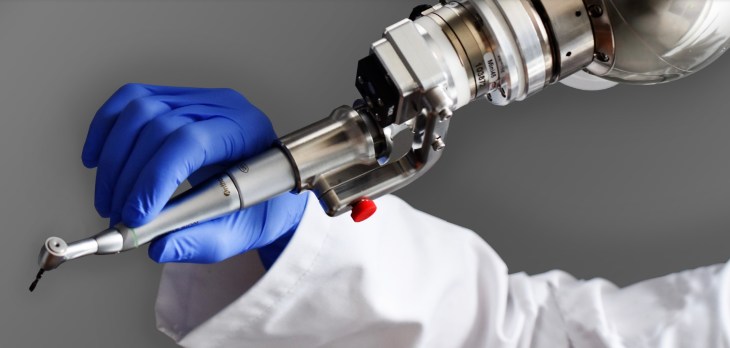Since the robotic dental surgery assistant Yomi first came on the market in 2019, more than 2,700 patients have stared up at its plastic sheathed metal arms. Now the company behind it, Neocis, has raised $72 million to bring it into more dentists’ offices.
The money came from new investors DFJ Growth and Vivo Capital, with existing investors Mithril Capital Management, Norwest Venture Partners, Section 32 and the godfather of robotic surgery, Fred Moll, all participating in the new funding round.
The new cash haul means that Neocis has raised over $120 million since its launch in 2009.
Robots are proliferating in operating rooms around the country, with more than 6 million robotic-assisted surgeries taking place across multiple specialties. They’ve been scanning, excising and drilling into brains, hearts and bones for years, but it has only been in the past few years that robots have acquired the dexterity necessary to start rooting around in people’s mouths.
In fact, the Yomi is the only robot that’s been cleared by the U.S. Food and Drug Administration for dental implant surgery.
It’s currently being used by two dental schools — Boston University’s and the school at West Virginia University — to train a cohort of willing dental students.
The Neocis robot is a navigational tool used in planning and completing dental implant surgery. Traditional techniques to dental implantation cuts away a flap of tissue to expose the jaw bone. Using the Yomi robot, doctors don’t need to be quite so invasive with their surgery and can implant teeth more quickly and with less risk of complications from extensive surgeries, the company said.
Not everyone is convinced that robotics are the way forward for surgeries just yet. Writing in the U.K.-based medical journal The BMJ, three surgeons from Houston, Mike Liang, Naila Dhanani and Oscar Olavarria, lay out the risks and rewards of using medical robots:
The use of robotic surgery is controversial. Many surgeons who advocate for the robot have strong feelings based on their anecdotal experience and perceived relative advantages, while others may have been influenced by industry marketing. Critics, on the other side, argue that users overstate the advantages of this technology and are unwilling to accept the limitations. Much of the published research supporting the use of the robot is derived from observational studies performed by authors receiving funding from the robotic industry. Financial relationships between industry and authors are associated with an enormously increased likelihood of publishing reports favorable to industry. [1,2] When evaluating the true benefit of any new technology on patient outcomes, such bias must be considered
While some innovations and technology have improved medical care and how it is practised, others have been proven ineffective or even harmful. In addition to our recent study, most randomized trials have demonstrated that current robotic platforms provide no measurable benefit in clinical or patient centered outcomes, but do increase cost and operative duration. [3] It is only through high-quality research that the value of new emerging technologies and treatment strategies can be rigorously assessed. Although most individuals in healthcare share the same belief, to our surprise, some do not. [4] It seems obvious that a new surgical device considered an “innovation” requires thorough evaluation through studies of the highest quality. [5]
“As early pioneers of robotic orthopedic surgery technology, we are excited to bring robotics to the world of dental surgery,” said Alon Mozes, Neocis co-founder and chief executive. “This latest round of funding will allow us to expand the reach of our robotic-assisted surgical system and fuel further development of Yomi’s technology platform to deliver increased value to every dental office in the country.”
